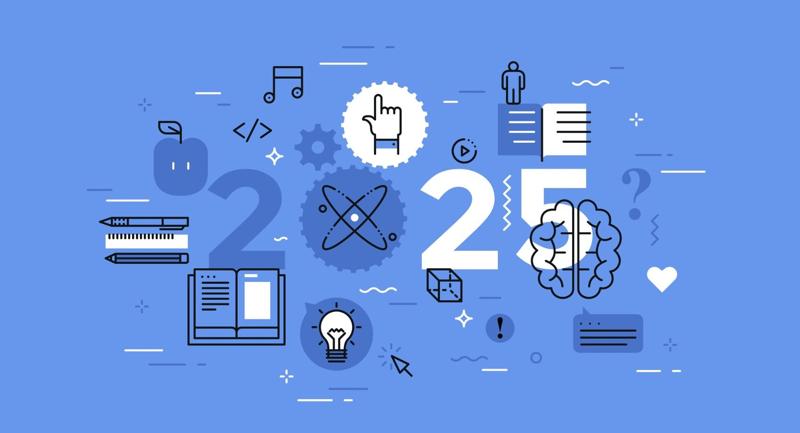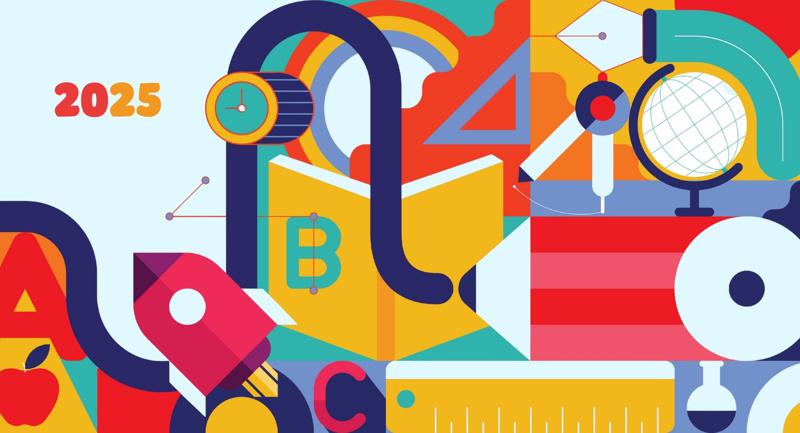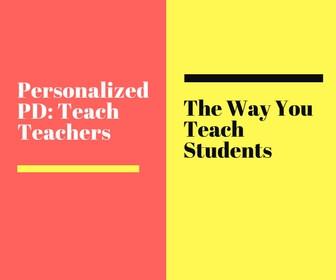In many ways, it feels as though our world has returned to a pre-pandemic normal: debates about masking have cooled, classrooms no longer have to account for social distancing, and vaccines have proven to be safe and effective in preventing severe illness. But one thing has not changed: teachers are still finding their jobs overwhelming and unsustainable, leading to burnout.
In the summer of 2021, I created the #SustainableTeaching Project to examine what is making teaching unsustainable. I surveyed more than 300 teachers from all 50 states and conducted more than 40 hours of interviews. Ultimately, sustainability in teaching came down to discussions about energy budgets. Teachers’ energy reserves are finite, and concerns about teacher agency, endless cycles of curriculum adoption, and limited time and resources wear on these energy reserves. Conversely, solutions like bolstering learner agency, creating collectivist school cultures where teachers collaborate regularly, and incorporating minimalist planning practices offered practical solutions for maintaining high quality instruction while distributing the energy demands of learning so teachers aren’t doing it all on their own. From these data emerged six mindset shifts, which became my forthcoming book, Make Teaching Sustainable: Six Shifts That Teachers Want and Students Need. While everyone’s sustainability journey will be slightly different, these six mindset shifts offer a framework through which to start sustainability discussions in your school.
1. Humanity Over Industry
Education is largely industrialized, with boxed curriculum and pre-packaged lessons used to boost test scores. However, scoring well on standardized tests isn’t always indicative of deep learning. For teaching to be sustainable, we need deep, transferable learning that gives agency to learners.
For teaching to be sustainable, we need deep, transferable learning that gives agency to learners.
When we shift our mindset away from industrialization and towards humanization, we validate and sustain learners’ identities, offering them both agency and psychological safety so that they can make decisions in the classroom with independence. This both affords them the dignity they deserve and encourages them to share in the aforementioned energy demands of learning, helping to sustain learning in the classroom.
Humanizing learning can take on many forms. For instance, many teachers begin the school year with getting-to-know-you activities. In addition to fun name games or interest inventories, consider having your students conduct an identity study: In an identity study, students learn about aspects of identity—like race or gender—helping them build a vocabulary to better understand and talk about themselves. You can incorporate this identity work into academics, surfacing issues of social justice within literacy or social studies curriculum or spotlighting historically marginalized figures in disciplines like STEM or the arts. 2. Collectivism Over Individualism
The notion of individualism grounds itself in American capitalist ideology: we must be self-reliant to be successful. But the reality is that no one does anything entirely on their own. For teaching to be sustainable, all stakeholders must share in the energy demands of learning, from teachers, learners, and coaches to administrators and families.
Over the course of the #SustainableTeaching Project, I had the opportunity to speak with Leah Leonard, a principal in North Carolina. “They’re all our ‘bears,’” she said in reference to the school’s mascot and the students of the school. At her school, responsibility for students was collectively shared among all staff. Staff also took a collectivist approach to ensuring teachers were able to replenish their energy reserves as needed. For example, the school used a tap-in-tap-out model to relieve teachers when they needed breaks.
When schools operate in a collectivist manner, educators share responsibility for reaching all students. In classrooms, teachers strike a balance between allowing learners to operate with autonomy and providing them with appropriate levels of scaffolding and support. This entails building humanizing classroom cultures where students learn teamwork so they can become stewards of their classrooms. In professional learning cultures, this means making decisions through consensus and writing actionable school visions so that everyone is united under a collective sense of purpose.
3. Empowerment Over Control
When schools humanize learning through an emphasis on collectivism, they become empowering places to teach and learn. It’s important we use the term empowerment mindfully: it’s not a teacher’s job to empower students, and it’s not an administrator’s or coach’s job to empower teachers.
The notion of empowering someone else is paternalistic; it creates a hierarchical power structure that we must dismantle to work toward sustainability. These hierarchical power structures emphasize control in schools, such as when administration forces teachers to submit lesson plans ahead of time, when we know all too well that instructional plans are neither fixed nor are they indicative of quality instruction. These hierarchies can also emerge when teachers control all the decisions that learners make over the course of a school day.
Instead, empowerment is about creating conditions and policies within which individuals can connect with a power that already exists inside of them. Thus, the more sustainable decision in both of the instances above is to create the conditions where learners and teachers harness their existing power to make educational decisions that sustain teaching and learning. Teacher-driven coaching cycles provide a powerful example for creating the conditions for empowerment. As Jim Knight tells us in The Impact Cycle, when teachers drive coaching cycles, they are invited to identify problems of practice, set a clear goal for improving instruction, and then reflect on the results of these changes. In this instance, coaches serve as sounding boards, helping teachers build on their assets, meanwhile supporting them as they forge new pathways for instruction. 4. Minimalism Over Maximalism
Minimalism isn’t simply about doing less. As educators explore sustainability in the upcoming school year, it’s important to continuously emphasize that minimalism supports sustainability due to its mindfulness. We become minimalists when we operate with intention.
Because education is so industrialized and grounded in American capitalism, we often take a more-is-more approach to teaching and learning. We adopt new curriculum branded with the latest trends; we buy new technologies because companies are skilled at appealing to superficial demands; we believe that to differentiate instruction, we have to have as many activities as there are students in the classroom, creating unsustainable patterns of planning, preparation, and instruction.
By shifting toward minimalism, planning and instruction become more sustainable. For example, we can leverage universal design principles to create single tasks or projects that embed pathways for learners of all abilities. This represents a concrete manifestation of mindfulness and intentionality. Instead of creating as many activities in the classroom as there are students, we design one rich task. This is mindful, as we notice learners’ needs and design with these in mind; it’s also intentional, intended to meet the needs of all learners, and requires less planning time.
5. Process Over Product
Too often, success in education is focused on the product and defined in terms of high standardized test scores. This overlooks the fact that learning is a non-linear process. Success can’t always be measured quantitatively.
Success should be a story that each learner writes over the course of the year in partnership with their teachers.
Success should be a story that each learner writes over the course of the year in partnership with their teachers. For assessment to be sustainable, we must emphasize qualitative metrics that help learners tell the story of their successes. For example, portfolio-based assessments allow students to collect evidence of their learning over the course of a given unit, grading period, or even the whole school year. Qualitative reflection can also provide students with the appropriate structures and language to reflect meaningfully on their learning. For instance, a student might reflect on finding a more efficient strategy for multiplying multi-digit numbers or identify a project management strategy that helped them break a project down into smaller steps and complete it on time. These successes cannot be measured by a number. They are stories that students must tell to ensure learning is sustained far beyond a grade or a score.
6. Flexibility Over Fixedness
None of these shifts can be undertaken without flexibility. What matters most in our classrooms is that we are reaching all learners. Sustainable teaching is not just about preserving teachers’ workloads: it’s about making sure that both teachers and students are sustained through fruitful learning. When we take too fixed a mindset through rigidly planned instruction or didactic instructional models that rely on regurgitation, learning has no space to breathe.
For teaching to be sustainable, teachers and learners alike need flexibility: students need to be able to ask questions, make mistakes, and play a role in steering learning down a path that leads to fruitful learning. However, like other shifts in our mindset, flexibility is about balance: Flexible and responsive pedagogy requires productive structures and instructional rituals that offer consistency and predictability while also allowing enough space for learners to shape instruction. Examples of structures that allow flexibility in learning include the workshop model, where students have ample independent and small-group time, or open-ended tasks that have multiple answers, allow for varied strategies, or can be completed at varied paces.
It Doesn’t Need to Be This Way
We don’t have to sacrifice ourselves or quality instruction to make teaching sustainable. In fact, if we start these conversations about sustainability and identify incremental shifts toward it, all stakeholders can find entry points into this work.
These six shifts begin with hope and the core belief that it doesn’t need to be this way. We, as teachers, didn’t sign up for unsustainable, demoralizing workloads. We signed up to engage in the collective responsibility of enriching kids’ lives through learning.
So let’s get to it: let’s have the hard conversations, let’s be honest with ourselves about what we can do to make positive changes, and let’s #MakeTeachingSustainable. Make Teaching Sustainable
Six mindset shifts educators can implement to sustain their energy and effectiveness while empowering the students they lead.









